Agribusiness
With global food demand booming, Australia is ideally placed to become a premium food supplier and a long-term partner of choice in food security. To help its agribusiness and food sector scale-up and make the most of growth opportunities, Australia is keen to attract investment in innovation, agriculture production incorporating food and fibre products, and advanced food processing.
——-
Private investment is essential if agriculture is to fulfill its vital function of contributing to economic development, poverty reduction, and food security. Agricultural production needs to increase by at least 60% over the next 40 years to meet the rising demand for food resulting from world population growth, higher income levels, and lifestyle changes. Given the limited scope for net area expansion, agricultural growth will rely mainly on new increases in productivity, supported in particular by private investment in physical, human, and knowledge capital. Agricultural investment can help contain upward pressure on food prices in the context of rising land and water scarcity, thereby enhancing global food security.
Rising demand for organic products
The global demand for organic produce is increasing substantially due to increasing health concerns about food. Industry revenue is expected to grow at an annualized 13.5% over the five years through 2019-20, to $1.8 billion. This includes anticipated growth of 14.2% in the current year.
The United States Of America (USA)
While U.S. organic food sales still account for a relatively small share of total U.S. food sales, they have exhibited double-digit growth during most years since 2000 and the organic share has been overgrowing. In 2015, the Organic Trade Association estimated U.S. organic retail sales at $43.3 billion. Along with natural food supermarkets, restaurants, and direct marketers, most major U.S. food retailers—including Costco, Walmart, and Target—have expanded their organic food offerings in recent years.
Rapid expansion in consumer demand continues to provide opportunities for U.S. organic producers to enter high-value markets in the United States and other countries. Although the United States and the European Union (E.U.) are the two biggest markets for organic products, most states have growing domestic markets.
Australia and Global Markets
Australia’s organic food exports are doing so well; the main fear is that producer cannot keep up with the demand.
There’s a growing hunger for Australia’s organically grown produce. Two in every three Australian households report having bought organic products in the past year, contributing to a domestic consumer market predicted to be worth A$2 billion by 2018. If you are a millennial or you have young children, the likelihood that some of your grocery budgets have gone to organics is even higher.
Worldwide, the market for organics in 2015 was worth US$81.6 billion – a fourfold increase from 2000, according to the Australian Organic Market Report 2017. The U.S. is far and away from the most significant market, accounting for 44 percent of organic food and beverages sold. However, individually, the biggest consumers of organics are shoppers in Denmark, Switzerland, Luxembourg, and Sweden. Figures from Euromonitor reveal that in 2016, the Danes were the world’s biggest spenders on organics, handing across US$107.10 per person.
The global demand for organic produce is rising substantially, and HLG Australia seeks out nimble consumer-facing companies with business models that take advantage of these food and lifestyle trends to produce and distribute premium quality products.










